The Kop problem explained (and how to solve it)
There's understandable confusion and anger over the club's recent announcement regarding the Kop. Here's what's happened, which other clubs are facing similar issues, and a potential solution
Words: Joseph Clift
“Kop issues.” It came in a short statement – emailed first to season ticket holders, then placed online soon after. Concerns over fans not sitting in designated seats, and issues around persistent standing, mean that the Kop is now effectively only open to season ticket holders. We don’t know how long that will be for – though the phrase “for the foreseeable future” certainly raises alarm bells.
It’s a really disappointing development for fans, particularly given that in the current climate many fans can’t afford a season ticket, and rely on the Kop’s cheaper tickets to be able to go. Plenty of our fans will be impacted through no fault of their own, and there’s been some understandable fan anger and general confusion in response. So why has this action been taken – and why now?
As it likely means United taking a financial hit on gate receipts, it’s clearly not something that the club would ordinarily choose to do. While the club owns Bramall Lane, like every other club it still needs by law to annually gain the necessary permissions to hold the events it holds – from football to rugby league at the Lane last weekend.
The role of the Sports Grounds Safety Authority (SGSA) is basically to enforce the all-seater laws for football clubs to retain their licences, and to help advise Safety Advisory Groups (SAGs) at Local Authorities. As of July, clubs can apply for licensed standing areas – as some are now doing – but this hasn’t changed the overall roles of the SGSA & local SAGs. For areas that aren’t licensed for standing by the SGSA, the all-seater laws still apply.
For many, the club’s announcement last week will have come a bit out of the blue, and the club could have perhaps better communicated early in the season the pressure the club is under. So what’s changed, and why is the club being forced to clamp down on this?

A league-wide issue
The SGSA commissioned research on safe standing last year. The resulting report talks a lot about ‘tolerated standing areas’, where safety management teams at clubs accept that enforcing sitting is impossible to do. The larger the area where persistent standing occurs (e.g. the majority of a stand, or an away end) the trickier it is to enforce the law.
What seems to have changed this season is that what was tolerated in the past is becoming increasingly less tolerated now: in essence, a message from the SGSA to get on top of persistent standing, or license it with safe standing. And it’s not just United facing the repercussions of this.
In August, Burnley announced bans for supporters to enforce the all-seater laws, warning that the SGSA could otherwise close blocks of seats or a whole stand. A similar statement by Sunderland highlighted that the SGSA had called on the club to make tackling persistent standing and overcrowding a priority. And in the Premier League, Southampton has made some areas season-ticket holders only, in response to SGSA concerns about fan behaviour.

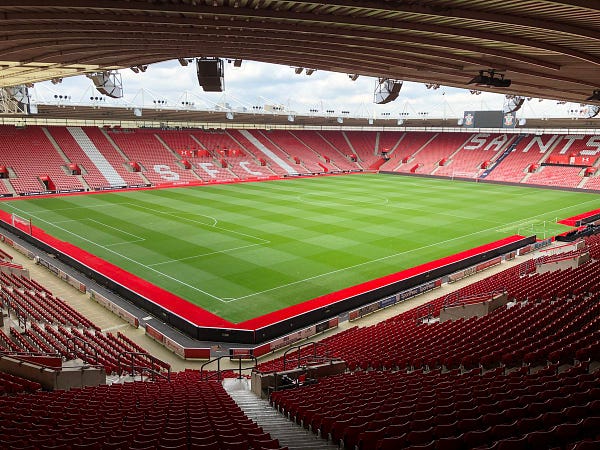
A potential solution?
Both Sunderland and Southampton are looking at safe standing as a solution for next season. Would this solve the problem on the Kop for the club?
Safe standing would be a solution to the persistent standing issue on the Kop. It could be a win-win-win: providing an area where fans can stand, where steward/fan tensions are reduced for the club, and where it’s recognised as safe by the relevant authorities.
However, it wouldn’t be an immediate solution to the issue of moving from a specific seat on the Kop to a different block or row (or as the SGSA term it, ‘intra-area migration’). Safe standing in its current licensed form requires one seat/space per person – i.e. you stand where the seat is. This is made trickier by the design of the Kop providing no concourse underneath – the entrances to the stand, unlike at many other grounds, are right in the very areas into which fans are moving, so any overcrowding impacts how fans enter/leave the stand. Safe standing wouldn’t on its own reduce intra-area migration.
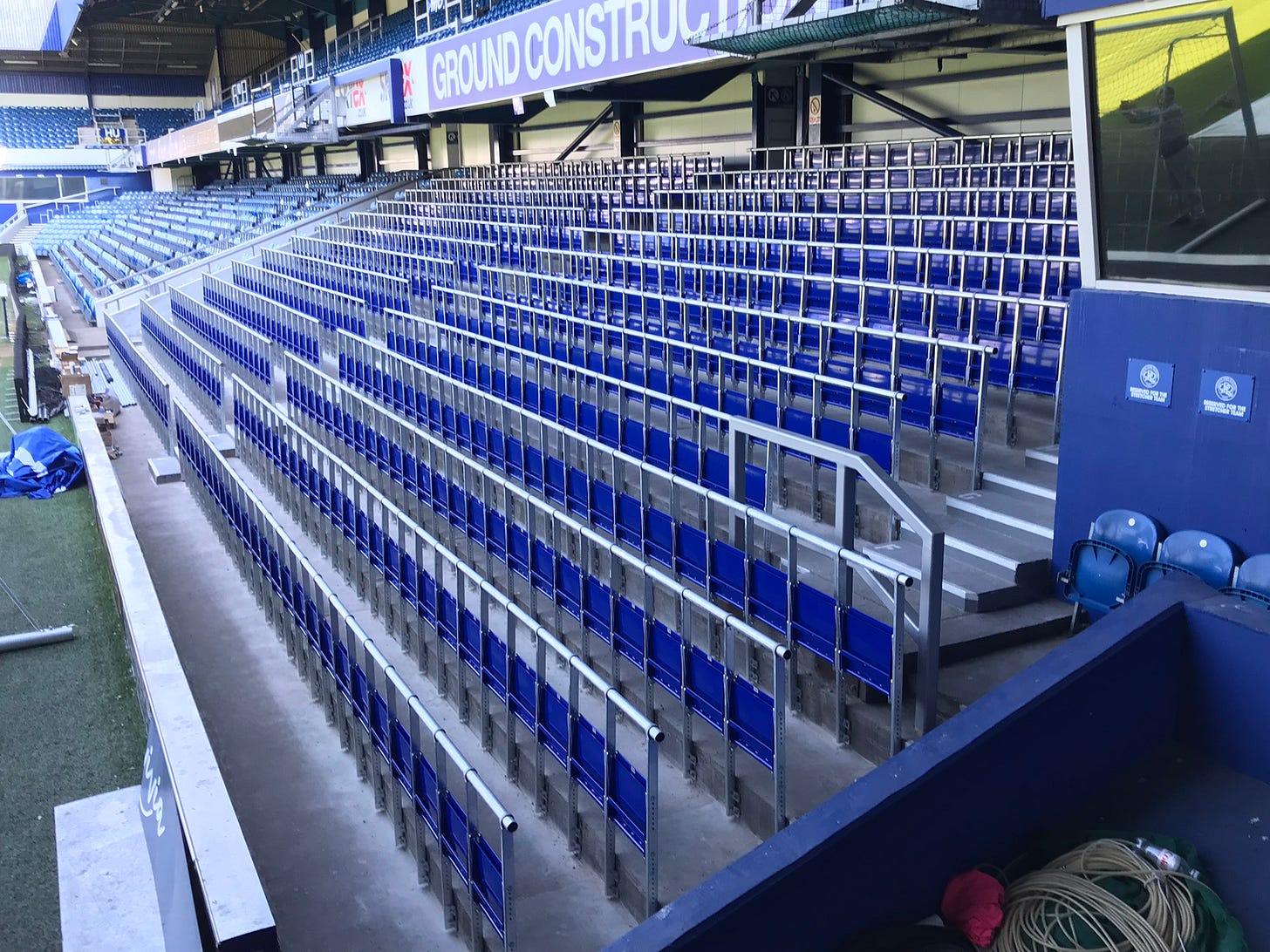
It also wouldn’t be a quick solution. The Kop’s row size limits not just the room for fans but the rail seating options. We’d have to go for the type of rail seat QPR installed in August to maximise the available space, which had to be ordered about six months in advance. The other issue is funding, though not bringing safe standing in could harm the club financially if it’s unable to return to selling matchday tickets for the Kop.
What we need to do now is carefully look at how we could best provide a licensed standing area, in a way that fans can get on board with. Stand United has raised this with the club, producing a plan on behalf of the major fan groups earlier this season, resulting in some initial conversations that we hope continue.

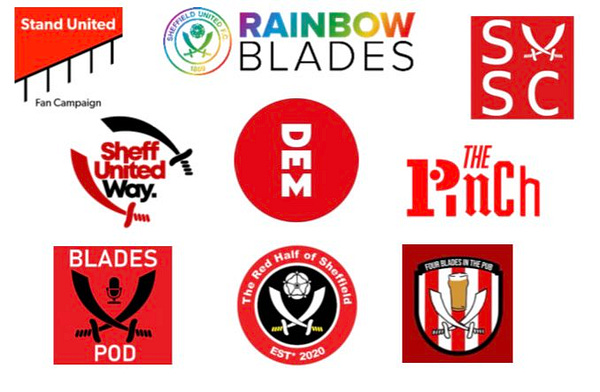
Before that happens, we all want the Kop to open fully again. The only way to do that is to work with them, and longer-term to go one better by supporting the case for the club to invest in safe standing.
Joseph Clift is the founder of Stand United, a fan-led campaign aiming to bring safe standing to Bramall Lane. It is an Associate member of the Football Supporters Association. For more information, or to get involved in the campaign, visit standunited.uk or tweet them here.


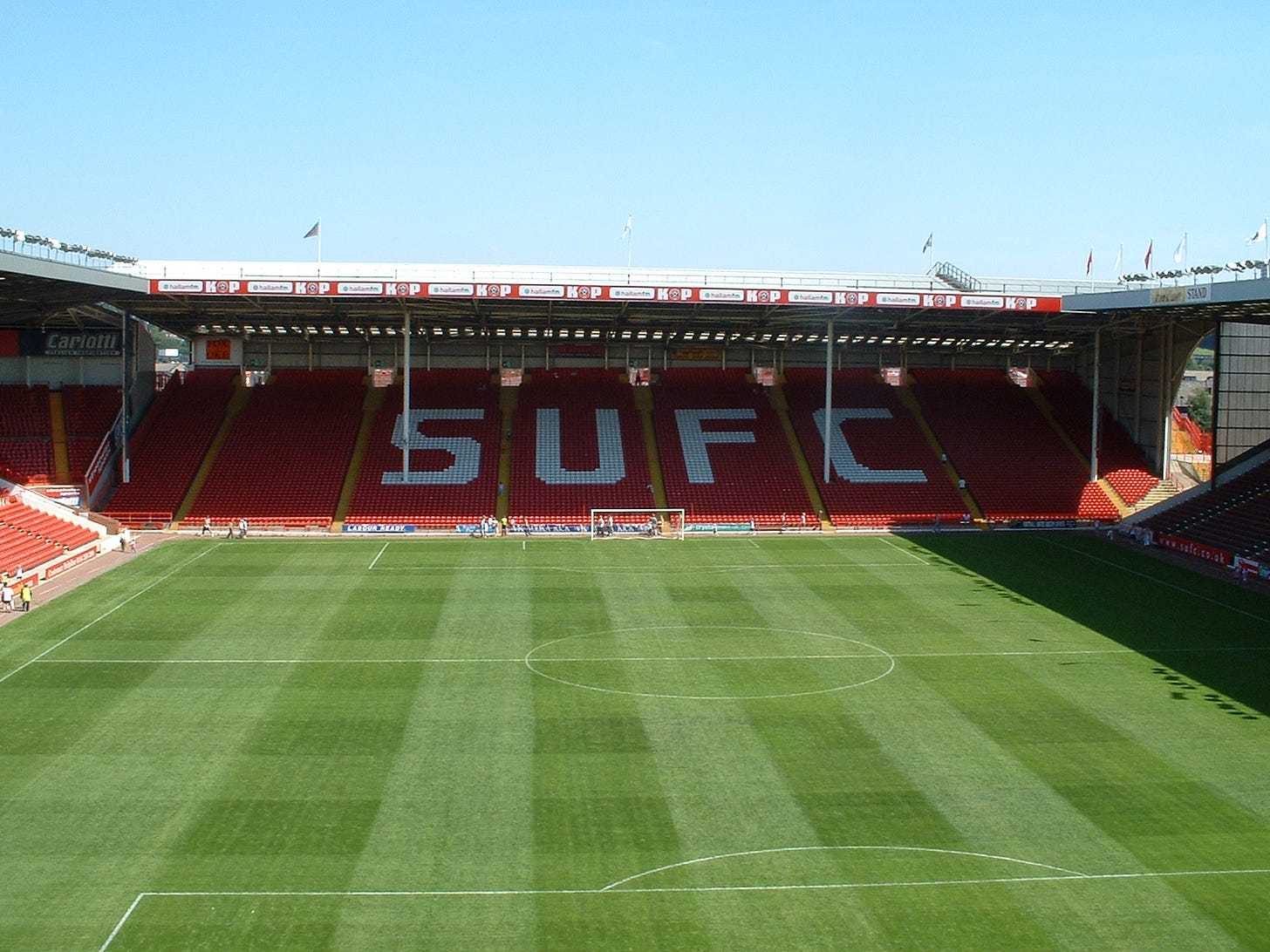
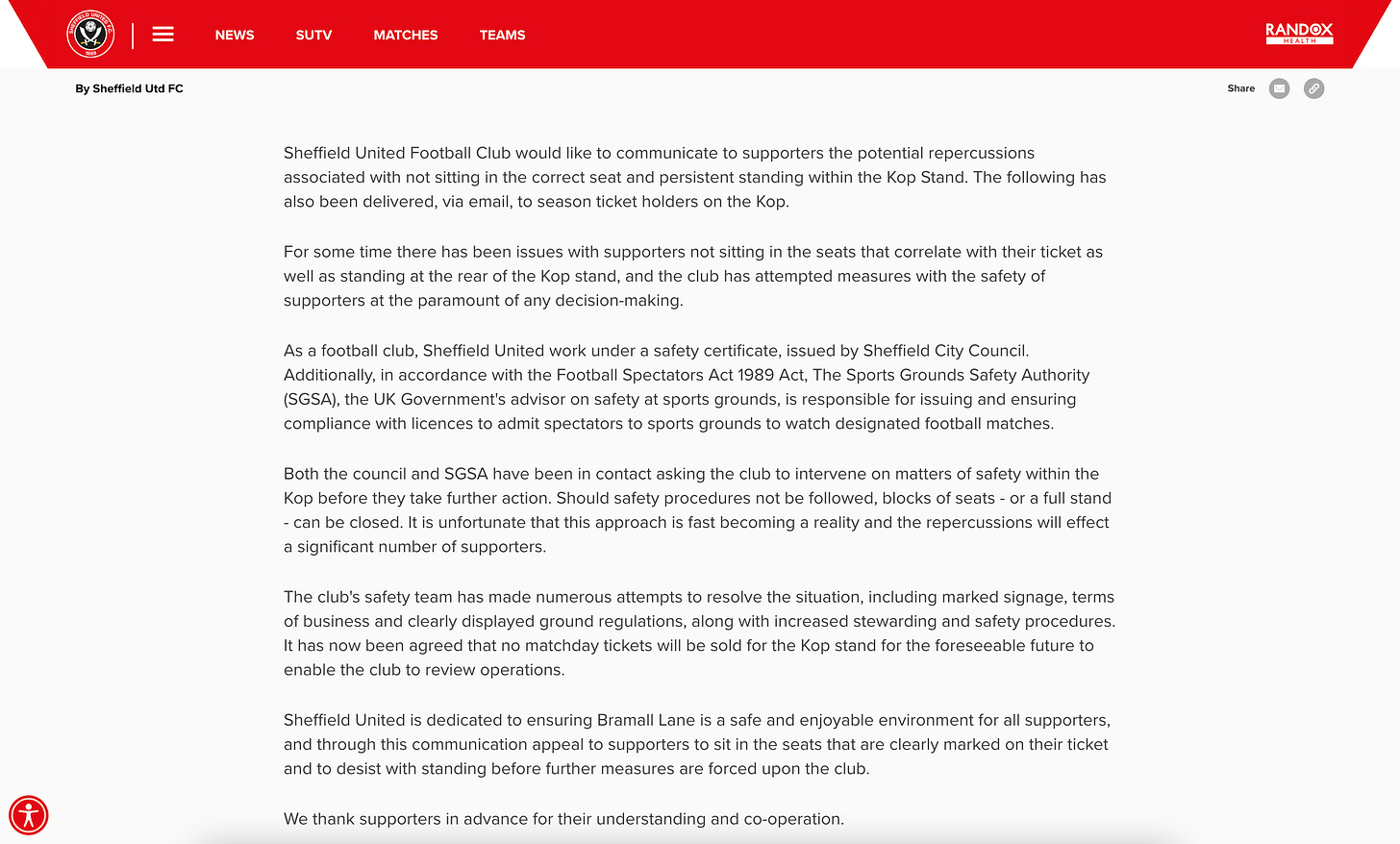
Thanks for this, Joseph and for your work with ‘Stand United’.
Since I sit in the South Stand, this hasn’t been a problem that’s affected me and I’ll admit I had no idea that trouble of this kind had been brewing in the Kop, until I read the notice on the Club website and saw the discussion on one of the forums.
I have to agree that the memo was poorly worded, and it took me a while to work out exactly what it was saying! As you and others have pointed out, earlier communication would have been more effective as well as a clearer explanation and the need for the actions taken.
Being an ‘older’ and less mobile person, I do need to sit for matches and I was delighted when the Taylor Report decreed that grounds should be all-seater and for a while, this was enforced. If you read the Ground Rules or Stewards’ Handbook of any Club, you’ll find that they should enforce this, but unfortunately these days, the stewards (and even Police at times) just don’t seem to have the clout, authority or willingness to do this; or quite often the number of those “supporters” who try to sit or stand in the wrong place or cause overcrowding (such as standing on the steps and refusing to move) is too overwhelming for the stewards to deal with so they simply let it go and this creates a 'vicious circle' where nothing gets resolved. In the past, I’ve only witnessed this sort of behaviour at ‘away’ matches, and hadn’t realised that it was now infiltrating into the Kop at Bramall Lane. It is right for the Club to want to deal with the matter, but the way in which it’s been approached probably leaves a bit to be desired!
I think it’s great that so many groups are working together to enable a solution to be found; and hope that the Kop supporters will – all – be able to watch the games in the way they wish before too much time elapses.
Sue.
Thanks for the informed view.
Its a question of working together to build a working solution. Importantly, whilst that work is ongoing, it is essential that the fan base respect the situation and individuals take responsibility for their own behaviour and work within the current guidelines/restrictions.
UTB